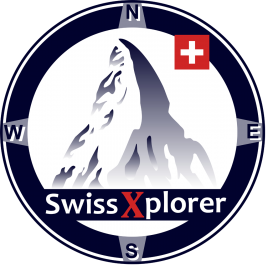The Best Ski Resorts Near Zurich

When we think of Switzerland, the first landscape that comes to mind is high snow-covered mountains and people with their skis everywhere. Our imagination corresponds to reality, as Alpine Skiing or Snowboarding is the 3rd most practiced sport among the Swiss, losing only to tracking and cycling. Today, we have selected the best ski Resorts Near Zurich
Due to the limitation of tracking and cycling during winter, skiing automatically becomes the most practiced sport among the Swiss, with 35.4% of the population adhering to the practice. Switzerland has 250 ski resorts, totaling more than 7,000km of marked slopes and 600km of toboggan runs. Every year between 20 and 25 million tourists and Swiss are attracted to the slopes.


The combination of factors for the sport could be described as perfect. When skiing, we mix a breathtaking landscape, physical exercise that releases endorphins, typical alpine cuisine, and most of the time, the presence of friends.
For those who do not have the equipment to ski or snowboard, there is the option of renting. Practically all resorts offer equipment rental for 1 or more days. Pants, jackets, gloves, and goggles are more difficult to rent, and we suggest you bring them from home.
If you're planning a trip to Switzerland and are interested in private guided tours, check out our options for private day trips departing from Zurich and Lucerne: click here.
For more days skiing (2 or more days), it may be advantageous to rent equipment at sports stores that are not close to the resort, as rental is usually cheaper.
One of the most important factors, especially for beginners, is the classification of the slopes that determine the degree of difficulty. The classification is mainly in relation to the inclination, which is measured in % (difference in altitude for every 100m traveled).
• Green – beginner slopes with inclinations between 6 and 20%. They are uncommon in Europe.
• Blue – easy slopes with an inclination of less than 25%. Many wide sections that facilitate open curves.
• Red – intermediate slope with an inclination of less than 40%, except in some short open sections where the inclination can be greater.
• Black – difficult slope with over 40% incline in most of its parts.
• Yellow – difficult unprepared slope with various narrow sections.
For visitors in the winter season, Swiss Xplorer has made a selection of some slopes for the practice of the sport with tips for each ski resort.
Note: The numbering is illustrative and does not correspond to a ranking.
1 Flumserberg
The best slope option for Zurich and surrounding areas. The slopes are very well maintained, and with its 65km of slopes, there are plenty of options to diversify. The gondolas and cable cars are modern, and for the more experienced, the structure has 2 Snowparks for jumps and acrobatics. One of the Snowparks even has a large air cushion to cushion the practice of riskier maneuvers such as back-flips or 360 ° spins. The scenery by Lake Walensee also makes the resort even more charming.
The resort can be accessed by subway (S2-S4) directly from Zurich’s central station. The disadvantage of easy access is that on sunny days with good snow conditions, the resort can get very crowded (especially on weekends).
Personal note: Perfect slope for day trips. For more experienced skiers, the 65km of slopes may become limited. As it is a relatively low altitude resort, snow conditions at the beginning or end of the season may not be ideal.
Relevant data: Altitude: 1,220 – 2,222m
Website: Flumserberg
2. Hoch-Ybrig
A little further from Zurich (approx. 55 minutes by car and 84 minutes by train), the Hoch-Ybrig resort is a great option in central Switzerland. With its 50 km of slopes, divided into blue, red and black levels, snow parks and toboggan run, fun is guaranteed for all ages and skiers of all levels. Even for those who have never skied before, this resort offers easier slopes for beginners at an affordable daily rate (compared to other resorts in Switzerland). The ski lifts are modern, and traditional restaurants can be found around the slopes. Hotels and rental properties are also available in the area. Personal note: Although the resort is not located at a high altitude, its location is privileged for snowfall, and the quality of the snow on the slopes is good for most of the winter.
Relevant information: Altitude: 1,050 – 1,820m
Website: Hoch-Ybrig
3. Laax
For those looking for an even more complete ski resort, Laax will surely surprise winter sports enthusiasts. Located 1.5 hours from Zurich, the resort offers 224 km of slopes, including several yellow runs that are considered “off-road” due to their narrow and deep snow-covered terrain that is not smoothed by grooming machines. The towns of Laax and Flims, which exude charm and everything you would expect from a ski paradise, provide access to the resort. In addition to the wide variety of slopes, the resort also boasts four snow parks and one of the world’s largest half-pipes. Due to the altitude range, from 1,100 m at the base to 3,018 m at the highest point, the good snow conditions extend practically throughout the season, from November to April. To finish the day, several bars and restaurants are available for lively Après-Ski with music and drinks. Personal note: Both the resort and the surrounding towns offer many leisure options and are an excellent choice for ski vacations, even for those who don’t want to ski every day.
Relevant information: Altitude: 1,100 – 3,018m
Website: Laax
4. Davos-Klosters
In addition to being the venue for the annual World Economic Forum meetings, Davos is a very attractive region for winter sports enthusiasts from around the world. With its modern and comprehensive infrastructure spread over 102 km of slopes, the quality and preparation of the slopes is impeccable. On days with lower visibility, modern structures such as those in Davos provide extra safety for the practice of the sport.
The resort also offers free WIFI with more than 20 hotspots scattered throughout the restaurants and bars along the slopes. Davos is the highest city on the European continent, with an altitude of 1,560 m (in Europe, cities are named when the population exceeds 10,000 inhabitants), so cold and snow are abundant in the region. The Davos region is composed of 5 different stations, with 3 being independent and 2 interconnected. Together, they have 269km of slopes for all tastes and ages.
A very interesting experience is also the igloo restaurant and hotel, located on one of the peaks of the station.
Personal note: With options of carving, slalom, freestyle, among others, the station offers a lot of diversity, even for longer stays. One of the most fantastic descents starts from the highest peak and covers 12km to a city at the foot of the mountain.
Relevant data: Altitude: 810 – 2,844m
Website: Davos
5. St. Moritz
St Moritz is internationally known as one of the most glamorous and expensive ski resorts in the world, and is a destination for many international celebrities. Therefore, the region is very wealthy and the stations’ structure is extremely robust and modern. Only the St. Moritz station offers 163km of slopes, and when combined with three other nearby stations, Corvatsch, Diavolezza, and Zuoz, the fun extends to 350km. The gastronomic diversity spreads over 15 restaurants along the slopes, ranging from simple home-cooked meals to elaborate gourmet dishes from world-renowned chefs. For those who are also looking for excitement, the options for bars, Aprés-Ski, and nightlife are abundant. Even for demanding skiers, St. Moritz will exceed expectations and the season can be very well enjoyed due to its altitude of 1,773m at the lowest point.
Personal note: St. Moritz is a very high-level station, both in terms of quality and prices. In terms of exclusivity, it is certainly among the best options and a worldwide reference. The cost-benefit issue should be considered according to each person’s needs.
Relevant data: Altitude: 1,773 – 3,057m
Website: St.Morit


